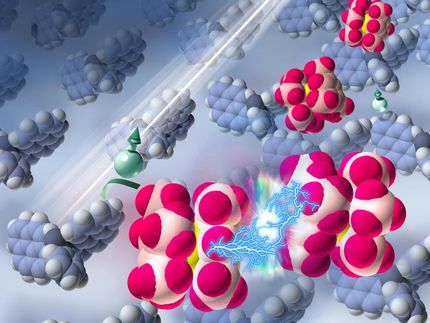'Seeing' molecular interactions could give boost to organic electronics
Organic materials are increasingly being applied in cutting-edge technologies. organic semiconductors, for example, are being used to develop paper-thin, plastic LED screens.

High-resolution transmission electron microscopy can be used to visualize a certain type of organic molecular interaction at the atomic level
Materials scientists need to understand the structures and physical properties of organic materials at the atomic level to optimize the efficiency and increase the life span of devices that incorporate them.
Previously used techniques for this purpose have had their limitations although high-resolution transmission electron microscopy (HR-TEM) has recently successfully been used to visualize the structures, movements and reactions of single, small organic molecules.
Now, for the first time, a team of researchers from Kyoto University's Institute for Integrated Cell-Material Sciences (iCeMS) and Japan's National Institute of Advanced Industrial Science and Technology together with colleagues from Finland's Tampere University of Technology has successfully used HR-TEM to visualize a certain type of organic molecular interaction at the atomic level.
They linked pyrene, a hydrocarbon composed of four flat benzene rings, to a single-walled carbon nanotube that the researchers used as a scaffold for this purpose. They then used HR-TEM to see the link.
"This same methodology can be used to study any organic molecules that contain an aryl group," says Tomokazu Umeyama, the study's lead investigator. An aryl group is a group of atoms derived from benzene by removing a hydrogen atom. "The methodology has the potential to provide indispensible information regarding molecular interactions," he says.
Topics
Organizations
Other news from the department science

Get the chemical industry in your inbox
By submitting this form you agree that LUMITOS AG will send you the newsletter(s) selected above by email. Your data will not be passed on to third parties. Your data will be stored and processed in accordance with our data protection regulations. LUMITOS may contact you by email for the purpose of advertising or market and opinion surveys. You can revoke your consent at any time without giving reasons to LUMITOS AG, Ernst-Augustin-Str. 2, 12489 Berlin, Germany or by e-mail at revoke@lumitos.com with effect for the future. In addition, each email contains a link to unsubscribe from the corresponding newsletter.



























































